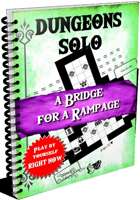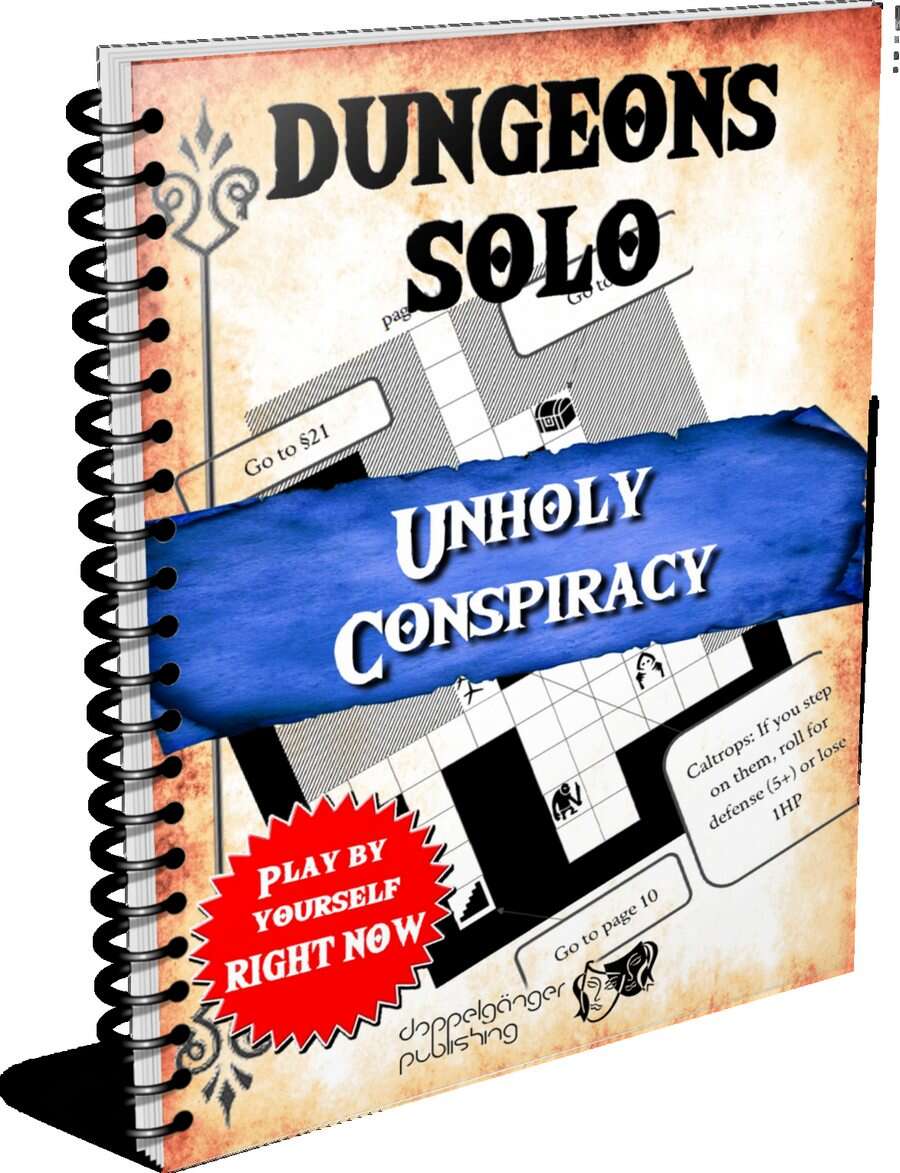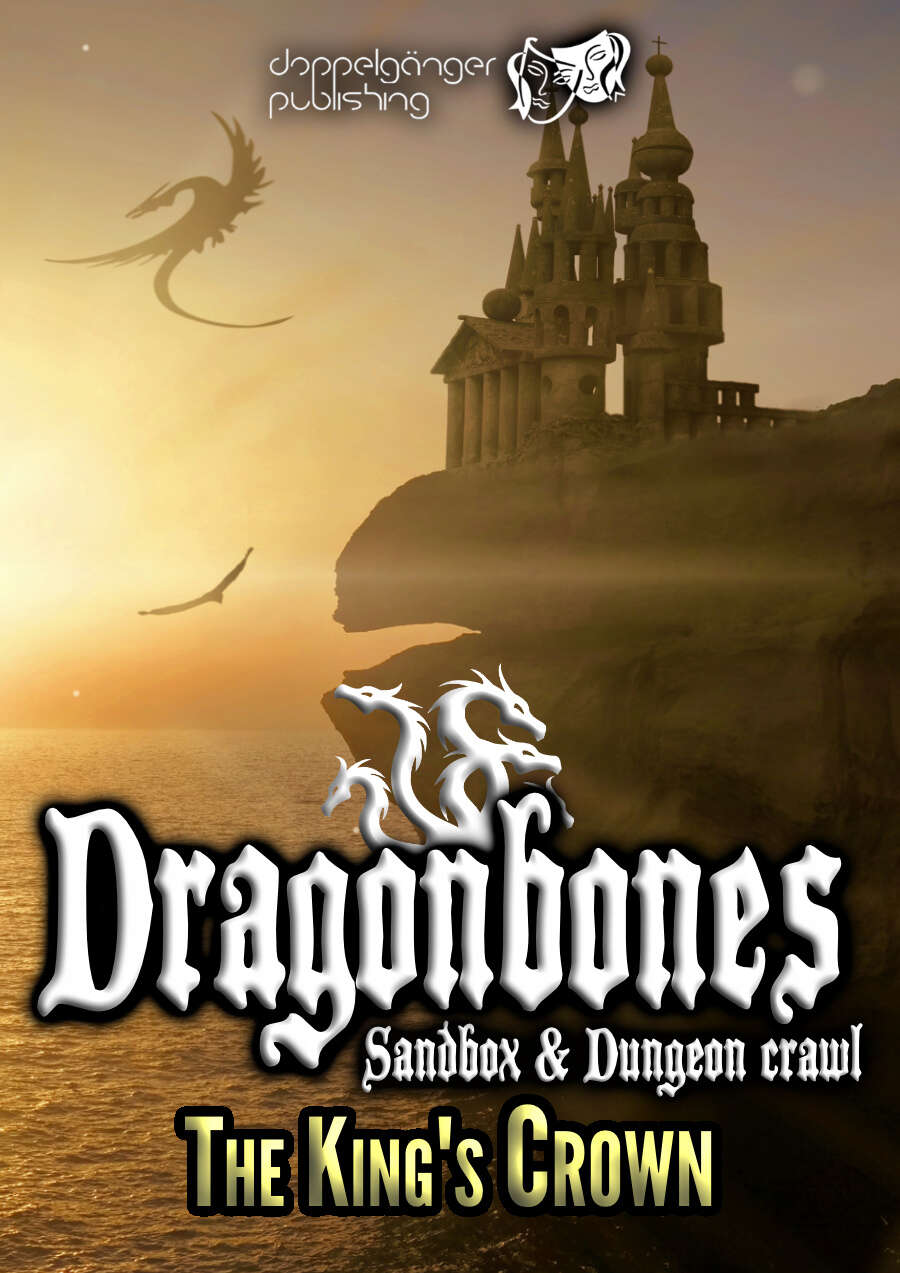The solo role-playing adventures can be a captivating experience, but they often pose a significant challenge: how to build a scenario that is both stimulating and motivating without getting lost in complexity? Many solo players encounter difficulties in completing their stories. Sometimes, they wander in a maze of narrative threads or simply lose their momentum.
This article aims to demystify the anatomy of a solo role-playing scenario, focusing on simplicity and effectiveness. Forget about overly complex systems, as we will guide you towards a minimalist approach centered on the story.
Part 1: The basic structure of a scenario
At the heart of every role-playing adventure lies a fundamental structure, consisting of three essential elements: the hook, the complications, and the conclusion. Understanding and mastering these elements is the first step towards creating an immersive and satisfying solo adventure. It's the simplest structure of an adventure.
The Hook
The hook is the starting point of your adventure. It's what grabs the player's attention and encourages them to get involved in the story. This point sometimes seems negligible in role-playing games, especially since tactical RPGs on the edge of wargaming have become dominant. Take DnD 5e with its thick rulebook resembling NASA instructions. Who cares about the story? What we want is to have the most powerful character possible to defeat as many monsters as possible. Most scenarios don't even bother justifying the hook: "You were hired to do this or that." If you want to tell a coherent story (and solo RPGs lend themselves to it), ask yourself the question of "why" five times. Why did you look for this job? Because I needed money. Why did you need money? ......
The Complications
The complications are the central events of your scenario. They are the challenges, obstacles, and encounters that advance the plot. Complications can vary in complexity, but they must all contribute to the overall story.
Of course, without complications, there is no scenario. Imagine: there is gold in the dungeon, but no monsters to defend it.
The Conclusion
The conclusion is the resolution of the story. This is where all the pieces of the puzzle fit together, mysteries find their answers, and the player gains a sense of accomplishment. Similar to the hook, the conclusion should not be underestimated. The adventure is resolved, but it should have an impact on the characters and the background.
Hook, Complications, Conclusion are the three fundamental components of an RPG scenario. Without these three elements, there is no scenario.
Part 2: Linear Complexity
The previous part may have seemed simplistic, but it was necessary. Now that we have laid the groundwork, you understand the basics of a scenario; we will explore how to enrich your story while maintaining a linear progression. This means that you will not deviate from the main storyline, but you will add elements to make it more captivating and surprising.
An Unexpected Twist Ending
Imagine an ending that no one could have predicted. Unexpected twist endings are an excellent way to rejuvenate an adventure while staying on a linear path. For example, the gold was cursed.
This unexpected revelation opens the door to a whole new adventure while keeping the player engaged.
Unexpected Complications
Another way to linearly complicate your scenario is to introduce unexpected complications but ensuring that they remain "encapsulated." This means that these complications temporarily interrupt the main storyline, but once resolved, the player returns to the main track. For example, while the player could be suddenly captured by unexpected enemies. After escaping from their captors, they return to their quest.
These additions add substance to your story while maintaining linear progression. They captivate the player by offering unexpected twists while avoiding getting lost in excessive complexity.
Part 3: Complexity with Cascade Threads
Now that we've seen how to linearly complicate a scenario, it's time to explore a more immersive approach by introducing cascade threads. This method allows you to further enrich your adventure by creating narrative branches that intertwine fluidly and stimulate the player.
Linear Cascade Complications
Imagine an adventure where each challenge leads to another. This structure can be linear or branched, but it involves the player facing a cascade of challenges to solve a problem.
Let's take the example of the dragon to defeat. To defeat the dragon, you need the magic sword. But to get the magic sword, the player must first obtain a map of the marsh. To get the map of the marsh, they need to steal it from the shop...
Branched Cascade Threads
Threads can also be opened infinitely. To kill the dragon, you need the magic sword and the invulnerable shield. While looking for the invulnerable shield, you meet Sam the firefighter, who needs help rescuing a cat stuck in a tree. On the way, you learn that the cat's owner also owns an alchemy shop that can sell you low-cost hair growth potions...
Each step adds a new layer of complexity to the story, keeping the player invested in the world you've created.
Advantages and Disadvantages
Complexity with cascade threads offers exceptional immersion and narrative richness. In addition to complexifying your adventure, you enrich your background.
However, you must be careful not to get lost in a multitude of side objectives. Too many digressions can lead to a loss of motivation or an overly complex adventure. It is essential to limit these threads or manage them carefully using mechanisms such as countdown timers that force the player to return to the main storyline.
By integrating cascade threads into your solo role-playing scenario, you create a dynamic and engaging world. Let your creativity guide you, but be sure to maintain a balance to provide a satisfying gaming experience.
Now that you have discovered the keys to creating more engaging and immersive solo role-playing scenarios, it's time to take action. Put these principles into practice in your next solo adventure and see how they can transform your gaming experience.
Feel free to share your experiences and your own tips with our minimalist solo role-playing community. Together, we can create exceptional stories. So, take up your pen (or your keyboard) and embark on the adventure. Your characters and your imagination await!
If you want to discover the series, click on the links at the bottom of the page!
If you like solo rpg, don't miss my last productions on dtrpg
And more on the shop of our publisher



















No comments:
Post a Comment